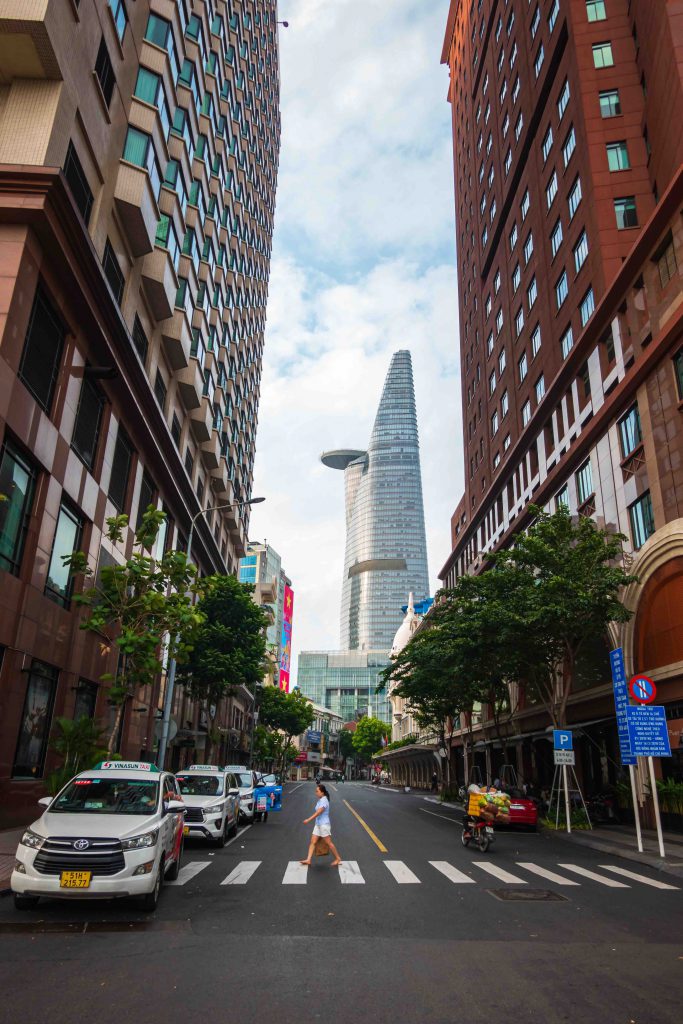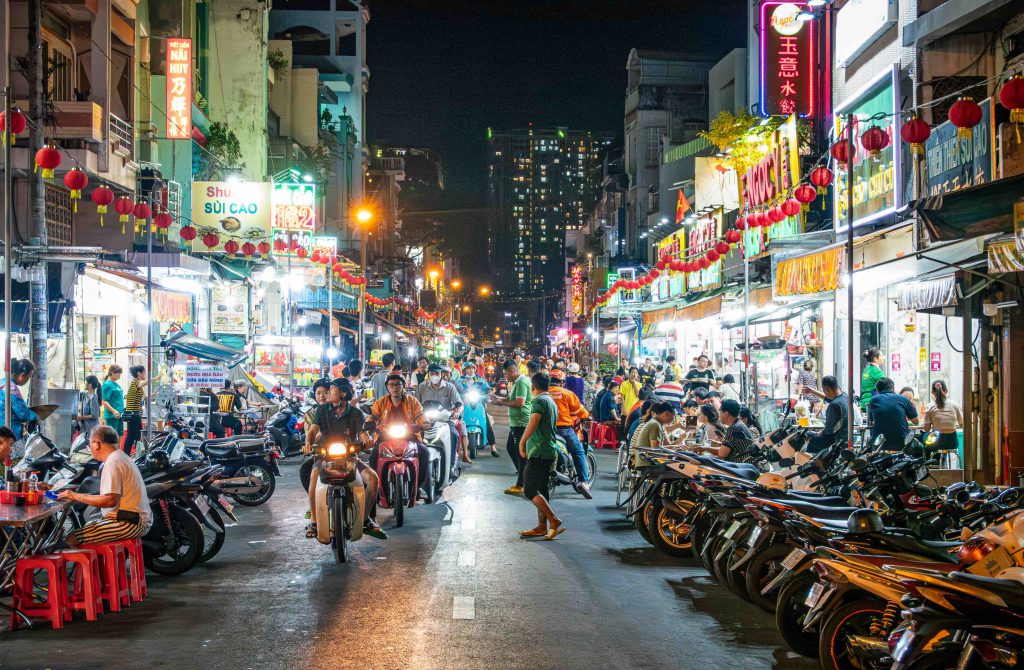Story: Phuong Nguyen
Photos: Thu Phan
This city opens its arms, welcoming people from all over to settle and build their lives.
Saigon – Ho Chi Minh City has a history spanning over 300 years, with its origins traced back to 1689 when Lord Nguyen Huu Canh established Gia Dinh Prefecture. Once the capital of Indochina and a thriving metropolis known as the “Pearl of the Far East,” the city has endured countless ups and downs while preserving a deep historical memory. It embodies the generous, open-hearted spirit of Vietnam’s South, balanced with a subtle and refined elegance. These elements come together to shape its unique cultural identity.

The heritage trail of a Southern city
My explorations began in the early hours of the morning. With its tropical climate, Saigon greeted me with a gentle breeze that left me in awe. As a wanderer, I had long dreamt of discovering the “heritage trail” in this place I call home, starting from Bach Dang Wharf, where the worship statue of Saint Tran stands guard in the heart of the city.
I started walking along Dong Khoi Street, heading into the core of Saigon’s central streets, past the central Opera House toward the square where Notre-Dame Cathedral and the Ho Chi Minh City Post Office lie. These three iconic landmarks form the foundation of Saigon’s historic architecture, showcasing French architectural styles with high preservation value. Notably, the Ho Chi Minh City Post Office is a prime example of the neoclassical style, designed by the renowned architect Gustave Eiffel.
Behind the cathedral lies Le Duan Street, a splendid avenue connecting the Independence Palace to the Saigon Zoo and Botanical Gardens. The serene road is lined with lush green trees, ancient canopies offering shade in 30/4 Park, where countless young people gather to chat, breathing life into the city’s daily rhythm.
Passing the Independence Palace, I walked slowly, reminiscing about the history that still lingers here, soaked into every brick and blade of grass within the compound. Turning left, I found myself on Nguyen Du Street, its rows of green tamarind trees immortalized in modern literature. From the Music Conservatory of Ho Chi Minh City, I strolled leisurely onward before turning onto Nguyen Trung Truc Street and arriving at Ben Thanh Market. Bustling and lively, regardless of the time of day or season, the market offers the finest produce from Saigon – and all over the country. It is both a large-scale retail market and a famous culinary destination, attracting many visitors.

I concluded my short tour of part of the city’s heritage trail by treating myself to a cup of authentic Saigon-style coffee – strong and iced – at a typical sidewalk café on beautiful Nguyen Du Street.
A dynamic city with a relaxed lifestyle
In the minds of the Vietnamese, Hanoi is the capital – the heart of the nation, while Ho Chi Minh City is where the economic pulse flows, driving the country’s development. From the Doi Moi (Renovation) period to the present, over 30 years have passed, and Saigon remains the center of commerce, investment, and finance.
The writer and researcher Son Nam, during his lifetime, always regarded Ho Chi Minh City as a land of openness and opportunity: “Saigon is a meeting place of all directions, a fertile land where birds flock”. He published two invaluable books about Saigon: “Saigon Tap Pi Lu” and “Nguoi Sai Gon” (The People of Saigon). Both are precious records depicting the lifestyle, people, and generous, open-hearted, and chivalrous spirit of old Saigon. In the hearts of Southerners, Saigon is a land full of immigrants, a city that opens its arms to nurture and provide opportunities for people from all over to settle and build their lives. This historical destiny has shaped the unique character of Saigon’s people – generous in the Southern style, yet refined and sufficiently polite. This also shapes their work ethic and, particularly, an open and enthusiastic business culture.

As the day drew to a close, I hurriedly hopped on a motorbike-taxi and drove to the famous Cho Lon district, known for its Chinese-style eateries serving Vietnamese-influenced cuisine.
I stopped at a renowned Chinese-style hu tieu (noodle soup) shop in Cho Lon, famous for decades. My bowl of hu tieu featured a rich broth fragrant with lemongrass, cinnamon, and hints of peanuts, plus spicy satay sauce. In this broth lay rare beef, beef balls, and chewy noodles, topped with fresh herbs, bean sprouts, and shredded cucumber. All the ingredients formed a unique dish found only in Cho Lon. The shop’s owner, in his seventies, still ladled the broth with ease, chatting loudly with regular customers.
This scene was typical of Saigon – generous, enthusiastic, always opening its arms to people from all over, offering them opportunities, and passing on its warmth so future generations will retain the spirit of a city that is innocent, chivalrous, and constantly striving for reinvention.










